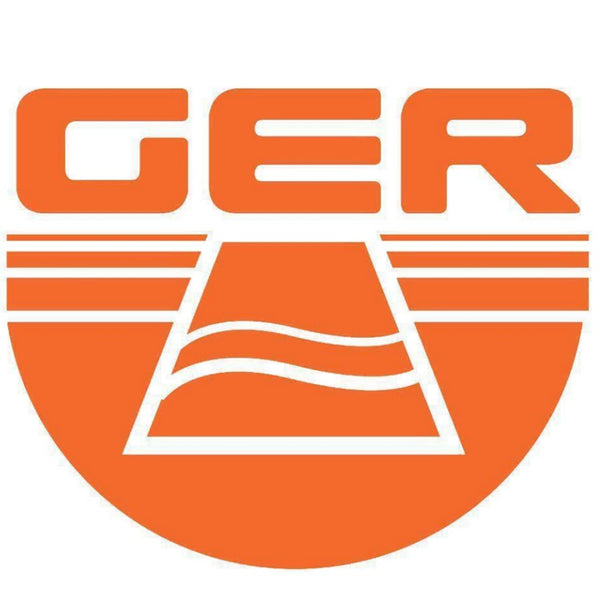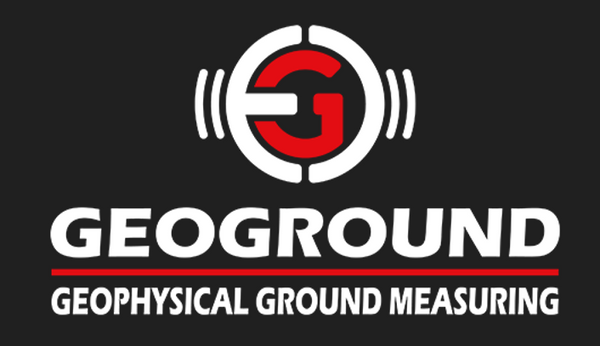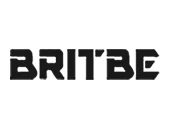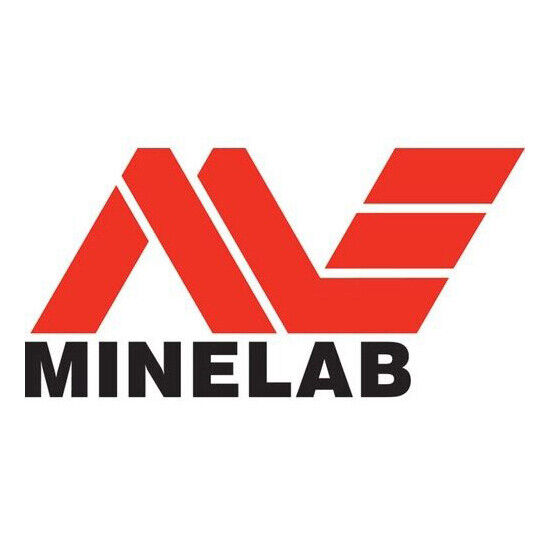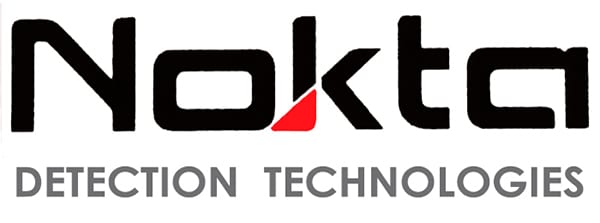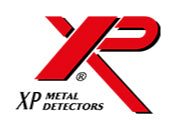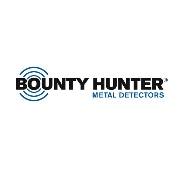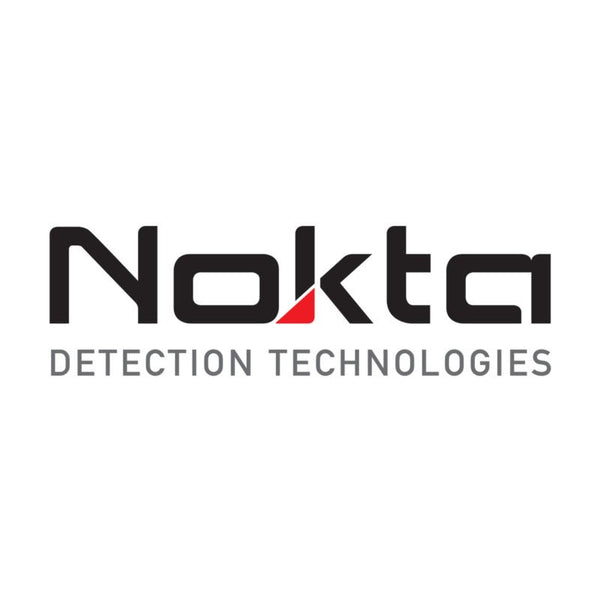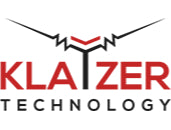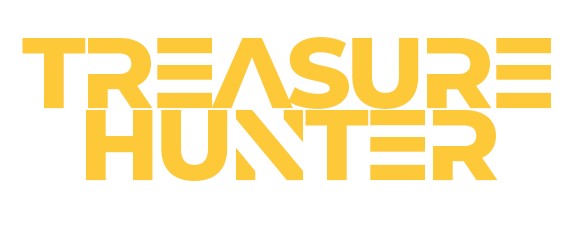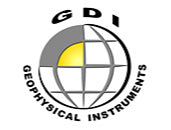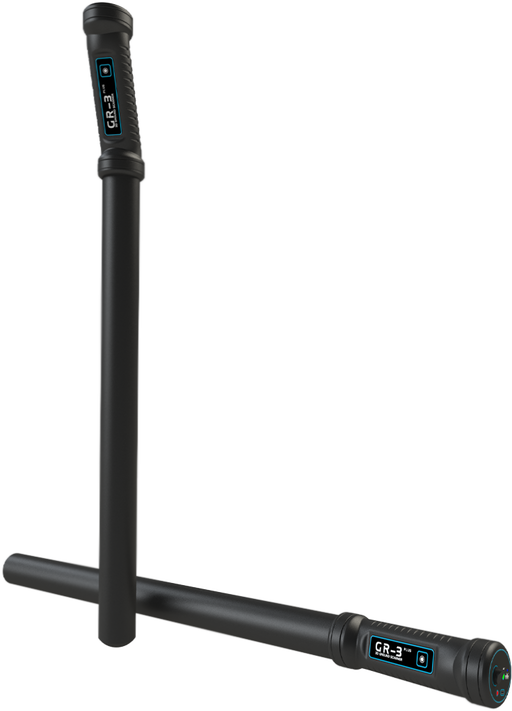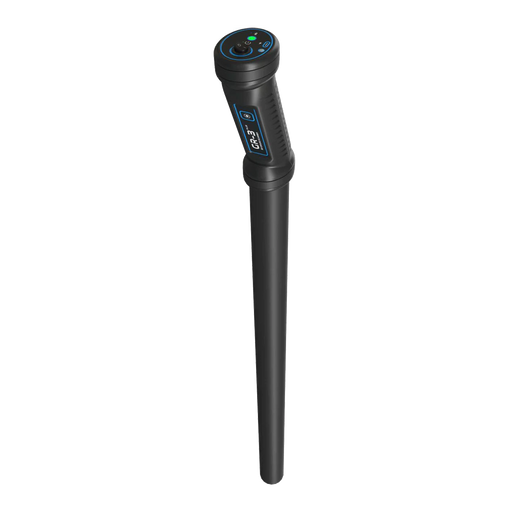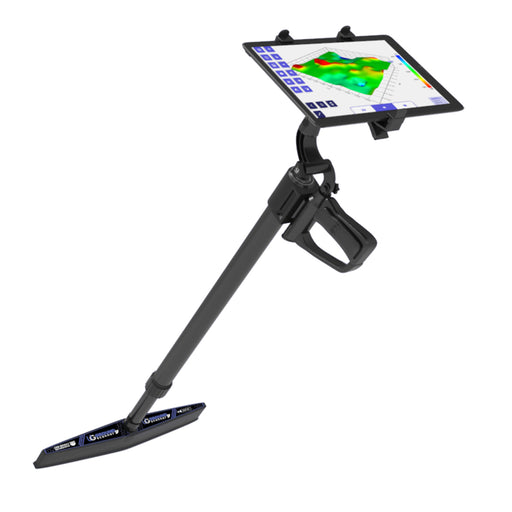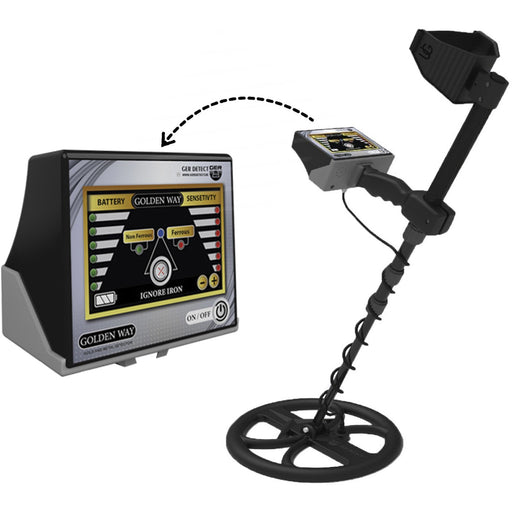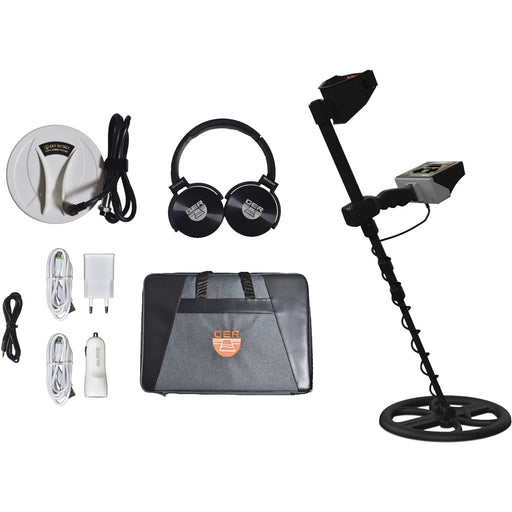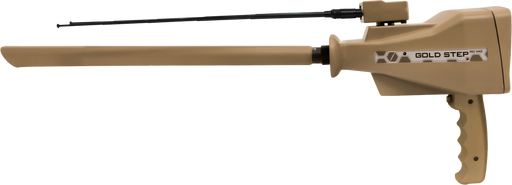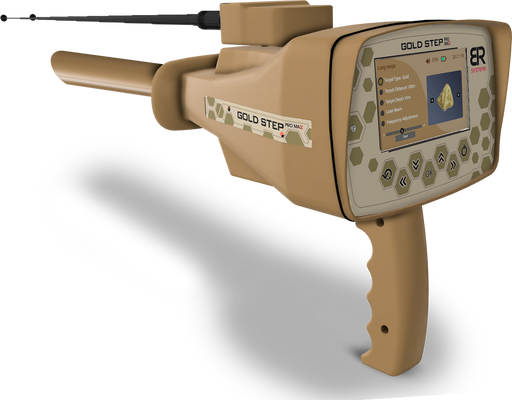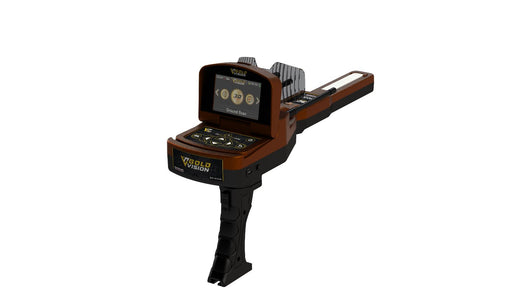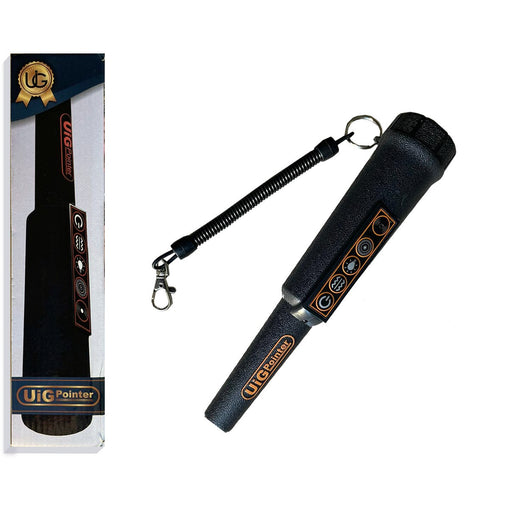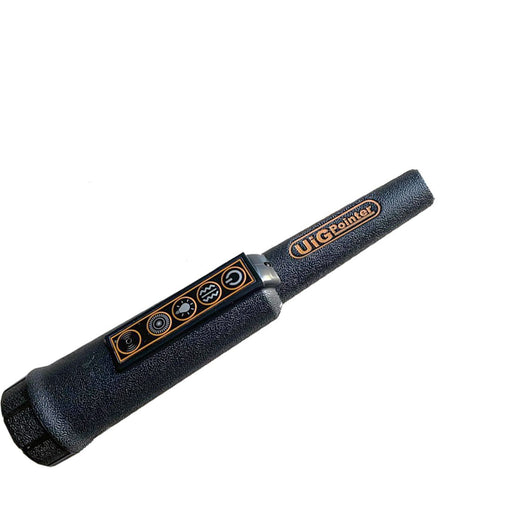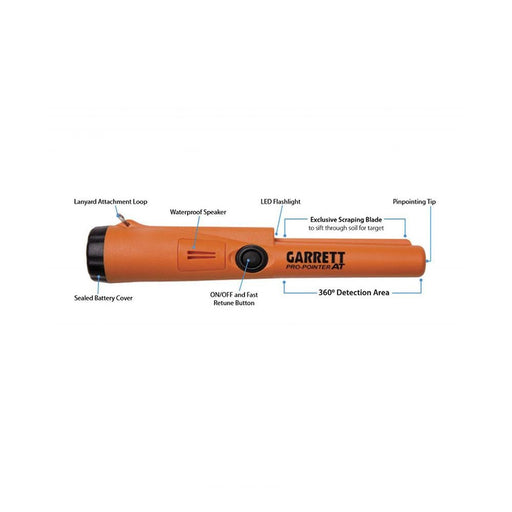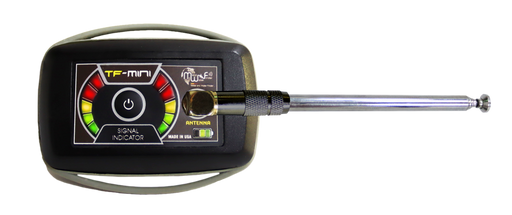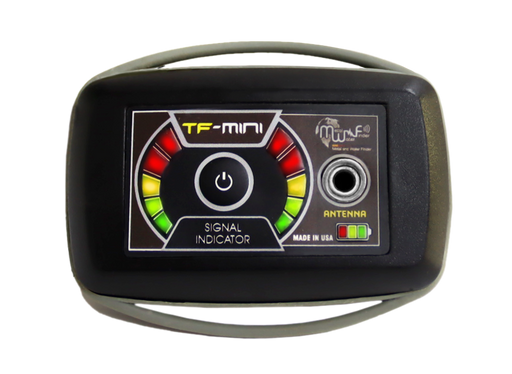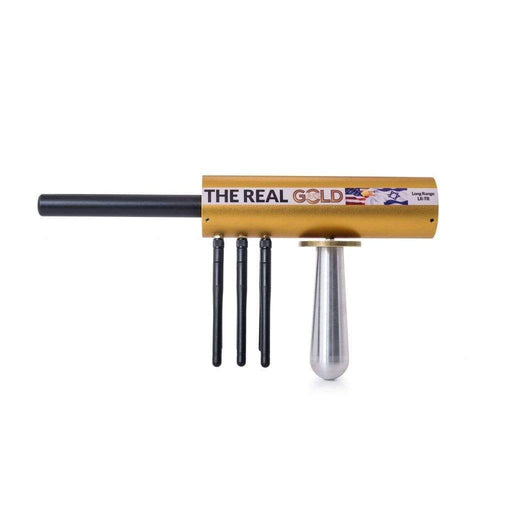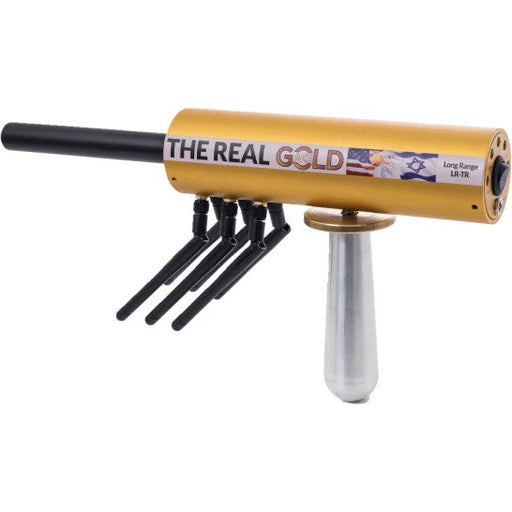OKM Evolution NTX 3D Scanner Metal Detector + Windows Tablet PC and Visualizer 3D Software
Depth: 8 meter (26 ft)
3D Metal Detector for Treasure Hunters and Gold Seekers
The metal detector and 3D ground scanner Evolution NTX can be used by treasure hunters, gold seekers, metal detectorists and archaeologists who are looking for buried objects, hidden artifacts or other lost items like:
- Lost valuables (rings, coins, jewelries, wedding bands).
- Buried treasures and artifacts.
- Ancient boxes, chests, chambers and sepulchers.
Unlike other metal detectors, the Evolution NTX can process graphical 3D images of underground treasure hoards and detected anomalies. Thus, you can determine size and depth of potential finds before digging. The deep penetration capability is just another advantage of our 3D ground scanner. Many great treasure finds prove the potential of our metal detecting technology made in Germany.
3D Metal Detector for Treasure Hunters and Gold Seekers
The successor of Evolution, Evolution NTX, is more compact and comes with improved features like rechargeable internal batteries, easier usability and more powerful sensor and coil technology.
Improved Usability
Based on our experiences as well as suggestions of many OKM users the new model has been improved and optimized in various aspects:
- Long-lasting and rechargeable batteries.
- Color touchscreen with higher resolution.
- Integration of Bluetooth headphones.
- More compact and robust design.
- Improved sensor and coil technology.
Full color display with touchscreen and multilingual user interface allow an easier usability and setup of the metal detector Evolution NTX. The brightness of the screen can be adjusted individually.
VLF Metal Detector
The combination of our sensor technology with a VLF search coil allows detecting not only near-surface metals, but also deeply buried artifacts and treasure objects.
Evolution NTX with telescopic search coil: The length of the metal detector Evolution NTX can be adjusted to the individual body height of its user.
Ground Scan and Metal Detection
The 3D ground scanner Evolution NTX supports two operating modes to research the underground soils for hidden objects and structures. The length of the detector can be adjusted individually according to your own body height. Thus, you can make this metal detector your metal detector.
Starting at the main menu, you simply select one of the operating modes:
-
Live Sound
This operating mode activates the VLF metal detector to find shallow metal objects like coins, rings and other jewelry. Next to an acoustical output, you can also see a simple graphical indication of the signals.
-
3D Scan
This operating mode is used to conduct graphical 3D ground scans. All scan data is stored into the device’s memory. This information can be transferred to the Visualizer 3D Software to generate graphical 3D images of underground objects and structures.
3D images via Visualizer 3D Software
The metal detector and 3D ground scanner Evolution NTX can be used by treasure hunters, gold seekers, metal detectorists and archaeologists.
With the 3D scan function and the software Visualizer 3D you can create a 3D graphic of the underground and find buried coins, rings, jewelry and similar treasure objects and artifacts. Especially metallic objects can be detected successfully. Buried objects are indicated by different colors in a graphical 3D representation.
The Tablet PC is equipped with a Windows operating system as well as OKM’s application software.
The most important features of the Windows Tablet PC are:
- Windows operating system.
- Multi-touch screen (1920 x 1200 pixels).
- Long lasting battery of about 8 hours.
- Weight of approx. 700 grams.
- Pre-configured with Visualizer 3D software.
All compatible metal detectors by OKM are transferring measured scan data to the Windows Tablet PC without any data loss. After that, the software Visualizer 3D displays a colored 3D representation of your underground objects like gold or silver treasures as well as artifacts, underground cavities, caves, tunnels or treasure chests. Using the 3D software you will find the estimated positions, depths and dimensions of your hidden treasures.
Functions of Visualizer 3D
Visualizer 3D is equipped with several functions no professional treasure hunter should miss. Besides the visualization of detected treasure finds in 3D graphics and the measurement of depth, position and size Visualizer 3D includes the following features:
- Representation as 2D and 3D graphic.
- Depth measurement.
- Determination of objects position.
- Manual correction of error signals.
- Printout, Image export for subsequent processing.
- Variable wireframe representation.
- Automatic measurement completion in case of missing signals.
- Automatic correction of error signals.
- Features to improve the graphics (e.g. interpolation, color filters).
- Free scalable and movable graphics as well as rotatable ground scans by 360°.
*2 years warranty
INTERNATIONAL CUSTOMERS
Import Duties, Taxes, and charges are not included in the item price or shipping charges. These charges are the buyer responsibility.
Frequently Asked Questions (FAQ)
What is the detection depth of your metal detectors?
Our metal detectors vary in detection depth depending on the model and the type of metal being detected. Generally, our detectors can identify targets at depths ranging from a few inches to several feet. For specific models, please refer to the product specifications on our website.
Can I test my metal detector with freshly buried metals?
Freshly buried metals cannot be detected immediately. For a metal detector to sense the buried metal, it needs to disrupt the magnetic field, which requires the metal to remain underground for a certain amount of time.
What is the detection distance of your professional metal detectors?
Professional metal detectors locate metals buried for many years by detecting subtle environmental changes caused by these metals. They utilize bio-energy interaction, ionization technology, electromagnetic field detection, advanced microprocessor analysis, long-term soil disturbance detection, and sensor fusion. The longer the burial time, the easier it is to detect these metals due to more pronounced ion fields and electromagnetic signatures.
What factors affect detection capability?
Several factors can influence detection capability, including:
● Soil Conditions: Mineralization levels and moisture can impact performance.
● Target Size: Larger targets are typically detected at greater depths than smaller ones.
● Detector Settings: Adjusting sensitivity and discrimination can help optimize detection.
What are some practical testing methods for professional metal detectors?
● Field Testing in Historic Sites: Test in areas with known buried metal objects, like historical battlefields or archaeological sites (with permission).
● Using Known Buried Objects: Test in places where long-buried metals are documented, such as old farm fields or construction sites.
● Avoid Air Testing: Do not test with unburied or freshly buried metals. These detectors work by detecting ionization fields around long-buried metals, unlike hobby detectors.
● Avoid Testing Inside Structures: Testing indoors can lead to interference from numerous cables, electrical systems, and other factors that can affect the performance of professional detectors.
How do I maintain my metal detector?
To keep your metal detector in top shape:
● Clean After Use: Remove dirt and moisture from the detector, especially the coil.
● Store Properly: Keep it in a cool, dry place and avoid extreme temperatures.
● Check Batteries: Regularly check and replace batteries to ensure optimal performance.
Can I use my metal detector into the water?
Some of our metal detectors are designed for water use, while others are not. Always check the product specifications to see if your model is waterproof or submersible before using it in water.
What should I do if my metal detector isn't working properly?
If your metal detector isn't working, please follow these steps:
● Send Us a Video: First, send us a video demonstrating how you are using the detector. In 95% of cases, the issue is due to user error.
● Technical Review: Our technical team and the manufacturer will review the video to determine the cause of the issue.
● Next Steps: Based on their assessment, we will provide a solution, which may include fixing the device, replacing it, or confirming that it’s a user error.


